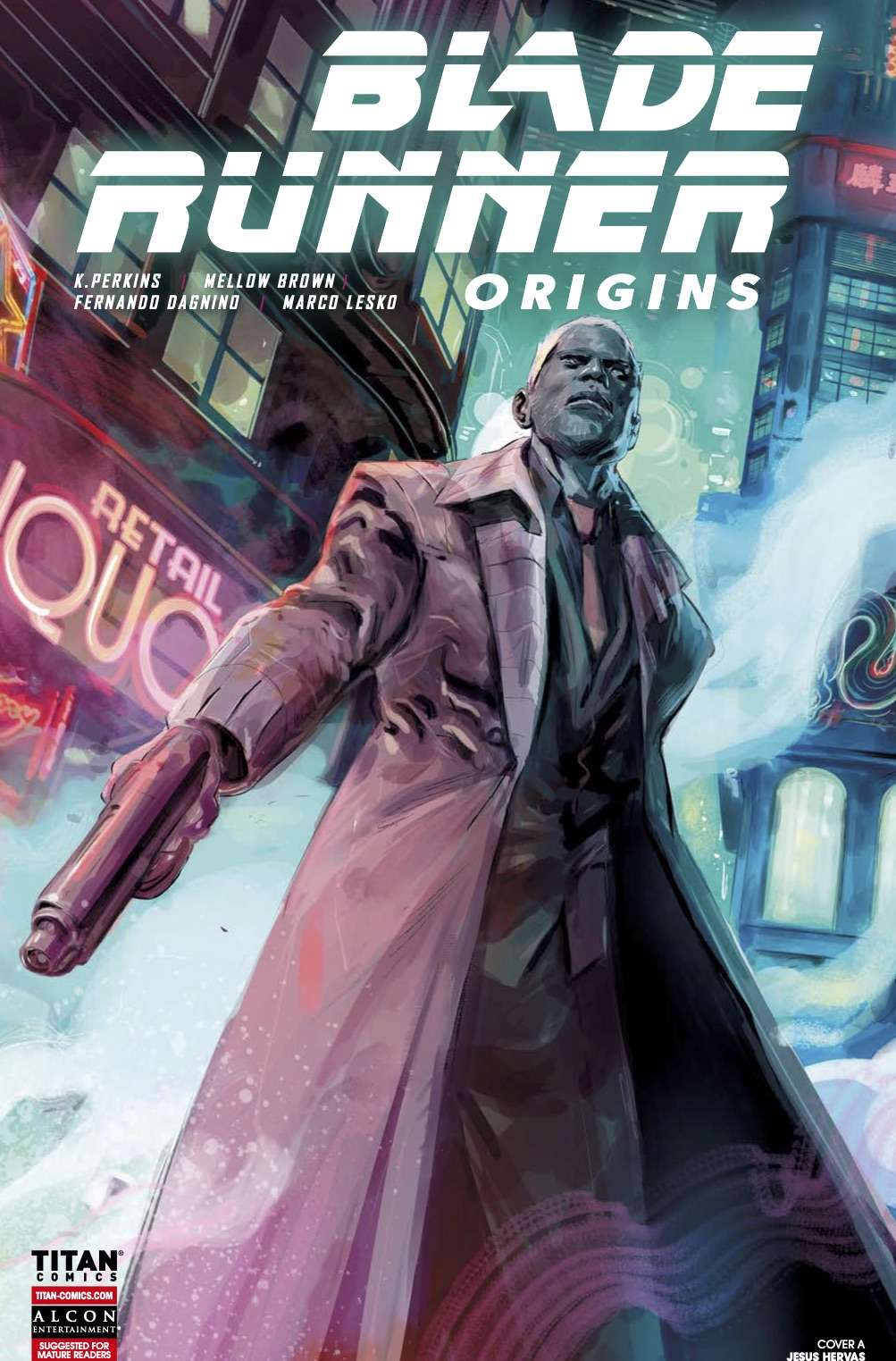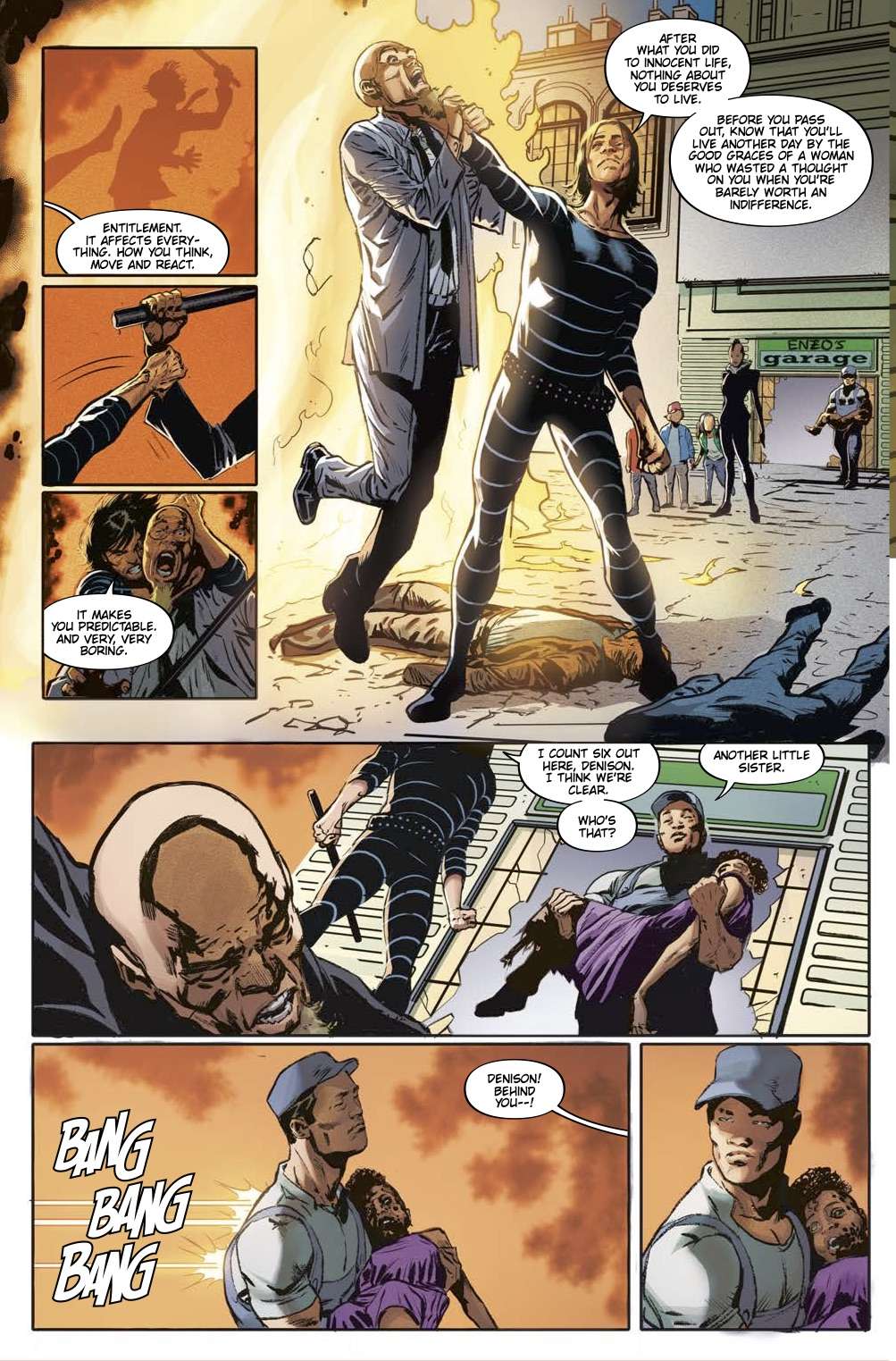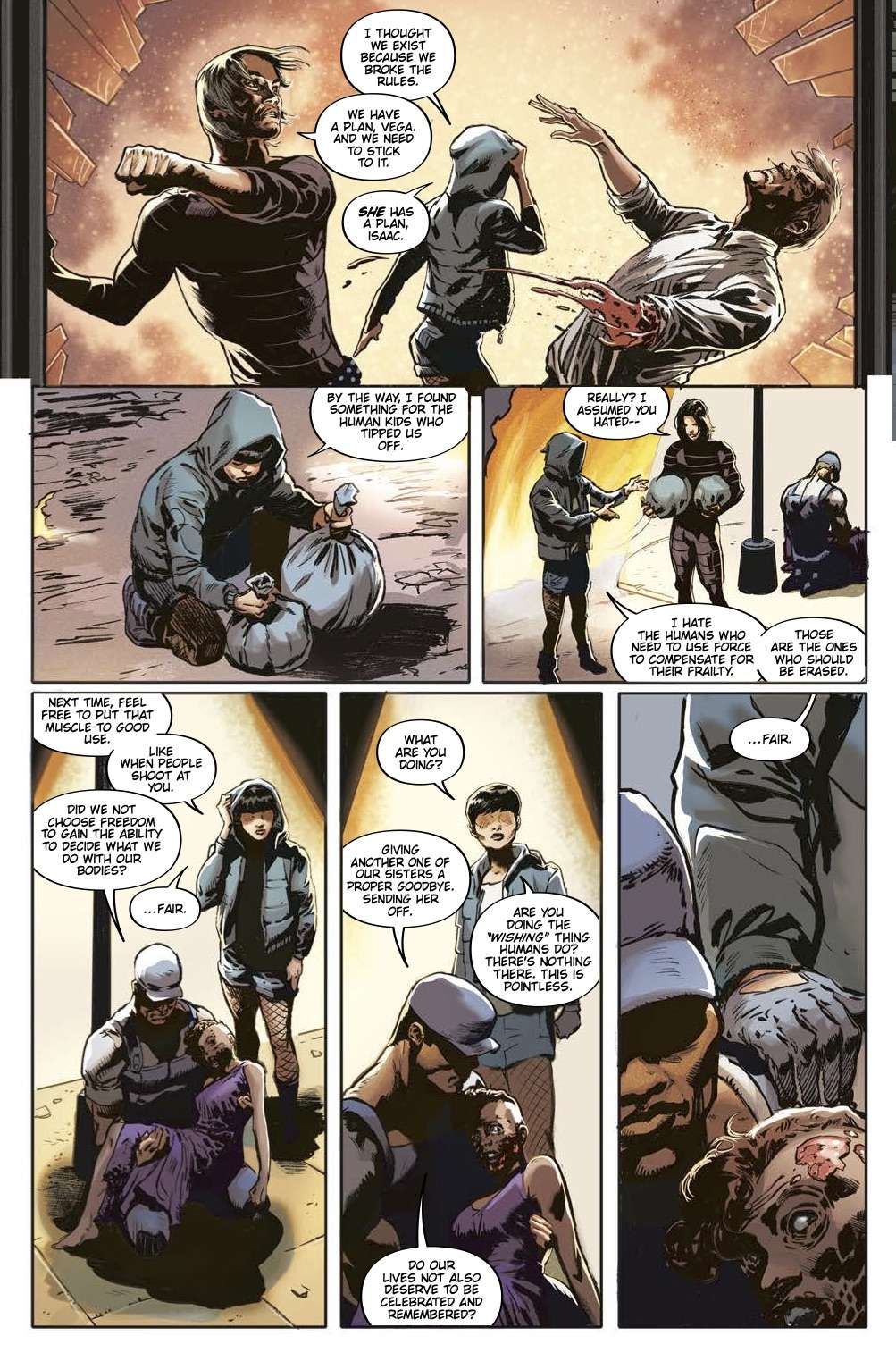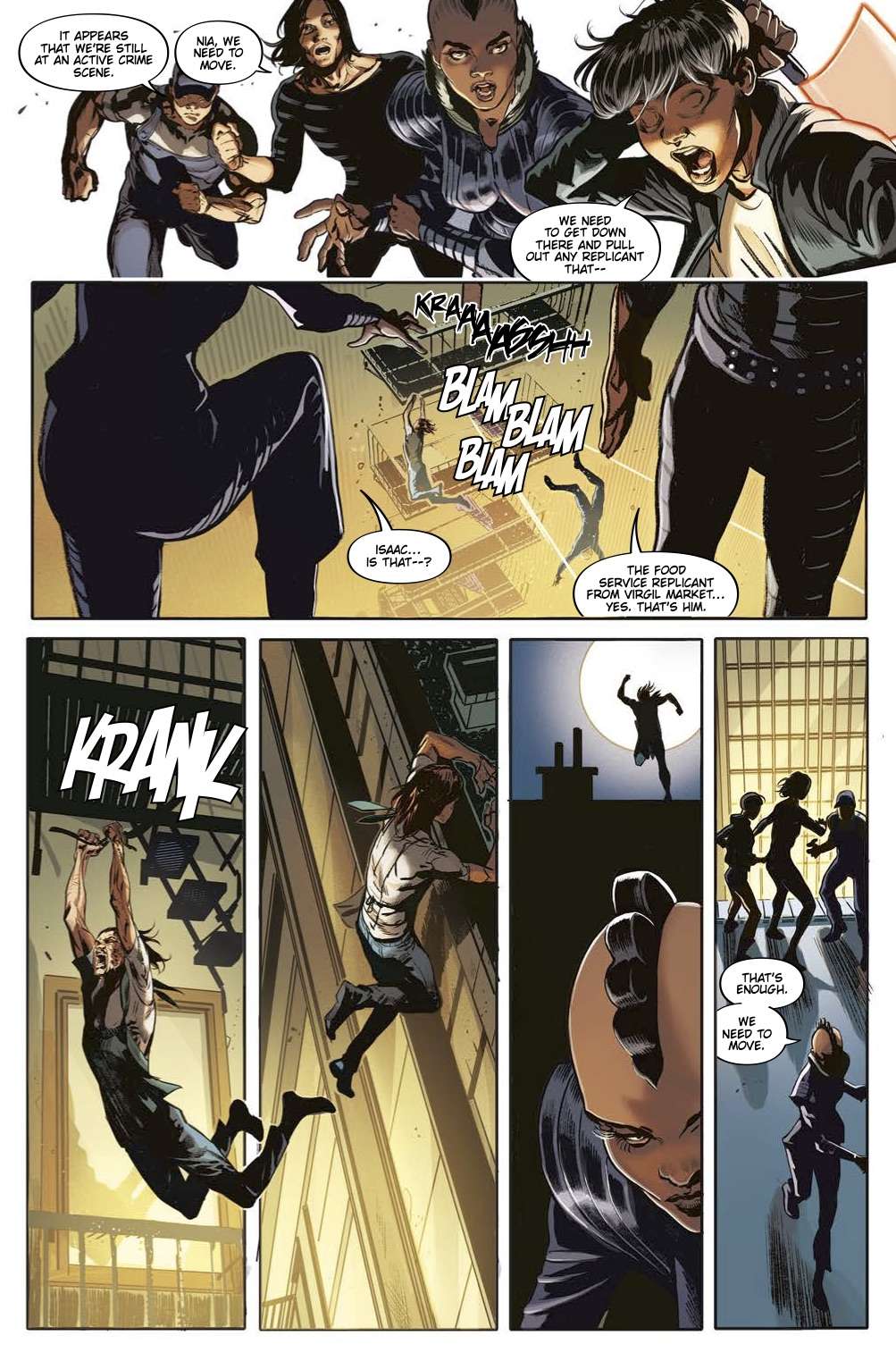Create a free profile to get unlimited access to exclusive videos, sweepstakes, and more!
Indie Comics Spotlight: Blade Runner: Origins looks at Replicants agency through a trans lens
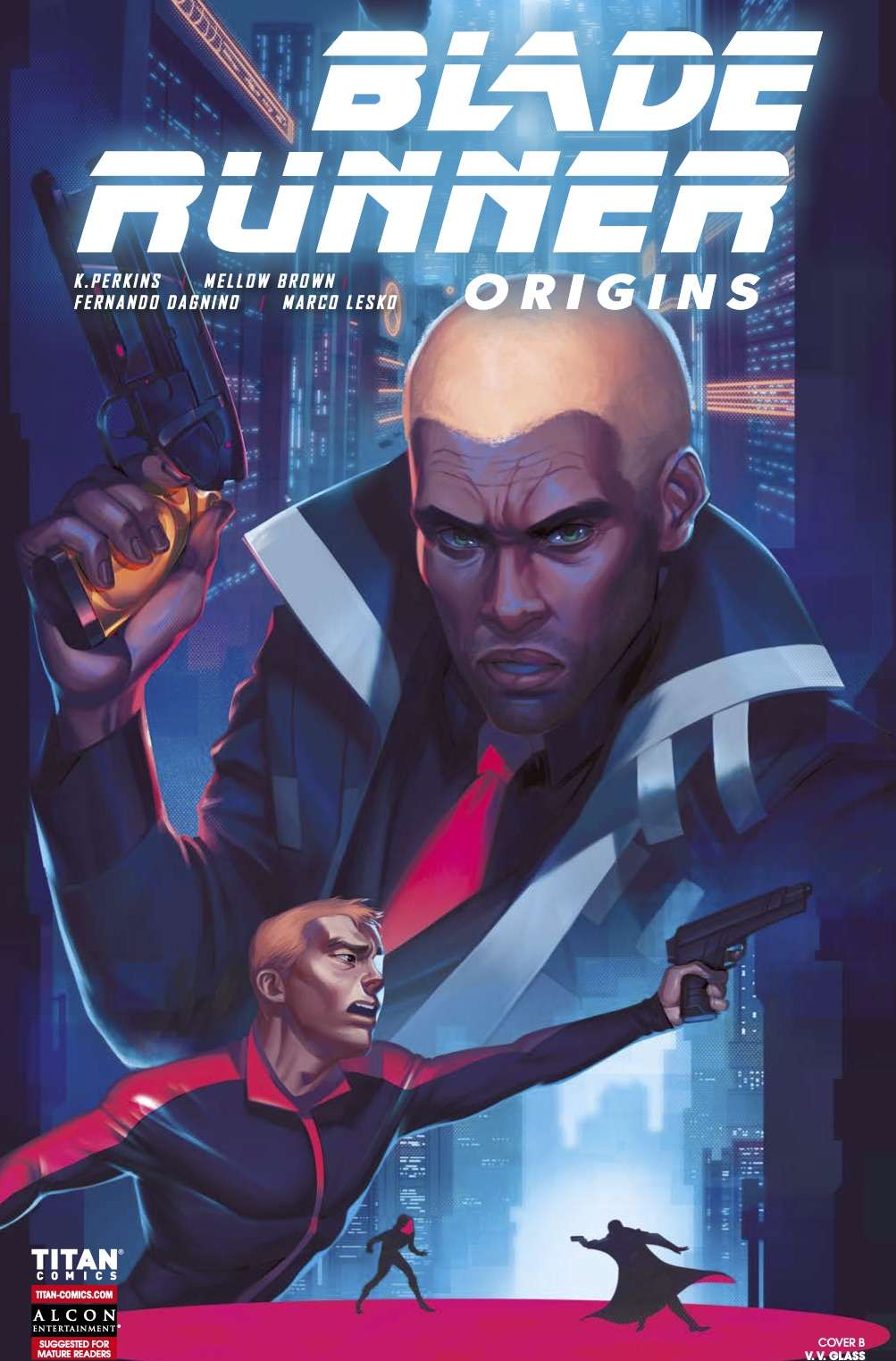
The Blade Runner universe has consistently explored themes of class, technology, identity, and discrimination and how the Replicants are born out of their intersection. These conversations continued beyond Ridley Scott's 1982 film through the 2017 sequel Blade Runner 2049 as well as in comics, shorts, and the upcoming anime sequel series Black Lotus, which comes out next month. But what was the initiating event that caused the Replicants to rebel against humans in the first place?
Almost 40 years after Scott's first film in the franchise, Blade Runner: Origins, the comic book series co-written by Mellow Brown (American Gods), K. Perkins (Paper Girls) with Mike Johnson (Supergirl) is here to tell us the complicated story of how the sentient androids and their hunters came to be.
The Origins project isn't the only Blade Runner comic out right now. In fact, publisher Titan Comics, also makes Blade Runner: 2019 and Blade Runner: 2029, two canon arcs co-written by Michael Green (Blade Runner: 2049) and Johnson about a runner named Ash, that started before Origins but take place after the events of the series. Blade Runner: Origins goes back to the beginning of the Replicants story when Tyrell Corps' specialized androids advanced from basic humanoid machines with moderate artificial intelligence, to self-aware sentient beings no longer willing to be the slaves of their creators.
The story follows Cal Moreaux, an LAPD detective whose latest assignment has him investigating the alleged suicide of a leading scientist at Tyrell Corp. After taking just one look at the crime scene, he knows the scientist did not die by her own hand, but when he snoops too close to the truth, Tyrell gives him an ultimatum: Find an escaped Nexus-5 model replicant in exchange for the life of his sister, a former Tyrell employee left in a vegetative state after an unknown "incident."
During Cal's investigation, we meet two different Replicants leading parallel lives of discovery. Asa, a transgender human who upgrades his body to that of a replicant, and Nia, a singularity of sorts, whose jump in the Replicant evolutionary scale will change the future of Replicants forever. Brown and Perkins drop us into a riveting mystery that is both familiar and refreshing at the same time. Fernando Dagnino's (KILLERS, Nyx) artwork has just the right balance of cyber noir and action that it almost feels like a detailed storyboard
SYFY WIRE spoke with the writing team about the concept of identity through a transhuman and trangender lens and their goal to leave a mark on the legacy of one of the most prominent universes science fiction has ever known.
You have created a definitive origin story of both the first Blade Runner, while also giving agency to the Replicants that fans are familiar with. Has it hit you yet how profound this project is?
Mellow Brown: Our goal has always been to make a permanent impact on this franchise and create an entry point that welcomes everyone to ask these existential questions. About how we value our bodies, identity, cultures and "purpose" and the corporations that are flippant and destructive toward us when they see us as resources instead of as individuals. These are more common conversations in 2021. And by focusing our series on the perspectives of characters who are in positions where they need to express these dire circumstances more openly, we hope to make this all more accessible.
It has always been hinted in the Blade Runner Universe that the Replicants are slaves, but you address that fact head-on. Can you explain your decision to make Cal, a Black man, the "slavecatcher" of the story?
Brown: A major theme in this franchise, similar to Ridley Scott's Alien, is putting a spotlight on how we're used by major company conglomerates. Often in ways that can help the powerful elite never have to confront accountability: their greatest weakness. And they want optimal results to solve that. So, the best person to hunt someone who is disenfranchised (the Replicants) would be someone who has experienced those feelings their entire life. This makes Cal's hardest battle an internal one as he tries to find a way to survive with the people who matter to him the most, while also being forced into this villainous role that gives him the means to continue. He is fighting for his soul and his own identity.
The concepts of LGBTQ trangender identity, as well as transhumanism identity, are both explored in this story. What's the difference between Asa and Nia's identity as Replicants?
K. Perkins: Asa and Nia are foils of each other in that one is experiencing being a Replicant by choice and the other isn't. This makes for very different perspectives as they both experience what it means to be a Replicant. As a Replicant, Nia's initial purpose — conceived by Asa's human counterpart, Dr. Lydia Kine — was to test the transference of consciousness process Dr. Kine and junior bioengineer, Effie, developed. Later issues will reveal more of that Nia and Asa backstory, as well as Nia's revolutionary purpose.
Every time Cal reveals more of who he is and where he stands, the plot moves his position on the board. Will we ever find out Cal's true motives?
Brown: Cal is a character that is reserved until he is pushed too far. When he becomes more kinetic and furious, he tends to say the things he really feels while on this journey. After the twist of Issue #6, you'll start to see him differently as he starts to say more of the quiet things about his life out loud. As he interacts and discovers more people in his life that he genuinely loves.
Cal appears to have shifted from the hunter to the hunted in this story. What can we look forward to in the conclusion of the arc in Issue #8?
Perkins: By the time we reach the last chapter of this story, Cal will make some choices that will recontextualize the way we look at the entire Blade Runner franchise. And I can't wait for people to discover what that means. He may be the first Blade Runner, but he is definitely the only Cal Moreaux.
This series feels very cinematic. Are there any plans in adapting Cal's story to live action or animation?
Brown: The choice to make this series feel very cinematic was always in honor of the franchise. But, we personally would love to see this particular story adapted to continue to open the door for others to join the world of Blade Runner.
